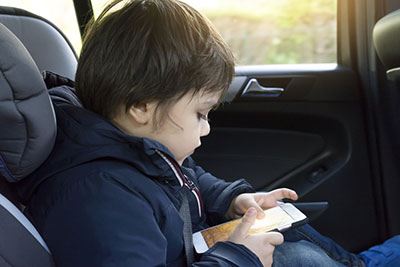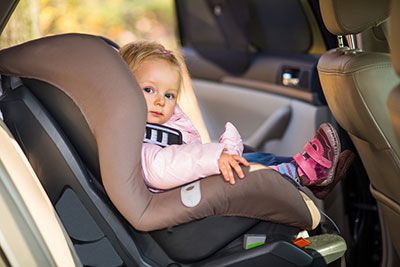As a parent, you know how important it is that your precious cargo is safely transported in the car. Accidents can happen unexpectedly, and being prepared for the worst-case scenario should not be taken lightly.
Purchasing insurance for your child's restraint may sound like an extra expense, but that peace of mind could make all the difference in protecting your child.
In this blog post, we'll guide you through what to look for when considering your child's car seat insurance. So, read on to learn more about the best policies available!
More...
Take Away Key Points:
Table of Contents
- Does your insurance company help with the child's car seat?
- Will the insurance company cover the car seat replacement?
- Will the insurance company cover the rear-facing car seat in an accident?
- Car seat replacement after a car accident
- Will changing car seats affect your auto insurance policy?
- My auto insurance company won't pay for the car seat replacement. Why?
- Disposing of a car seat after an accident
- Finding a new car seat after an accident
- Frequently Asked Questions
- Are infant car seats covered by insurance?
- What is the law for car seats in Michigan?
- Do insurance companies have to replace car seats in California?
- Will Graco replace a car seat after an accident?
- Why does insurance deny claims to replace car seats?
- Are car seats included in car insurance?
- What items can you claim for in a car accident?
- Conclusion
Does your insurance company help with the child's car seat?
The child's safety while in the car seat is your top priority while on the road. For this reason, you're buying a new seat and ensuring the child has maximum safety standards. But will you afford car insurance for your new car seat in an accident? If you will, here is what you can do.
Will the insurance company cover the car seat replacement?

Collision insurance will generally provide coverage for car seats damaged in an accident. Thus, the insurance will cover the car seat replacement.
Even if the car seat does not appear to be visibly damaged in the car crash, it is still recommended to replace it, as the accident may have weakened the structural integrity of the child's car seats.
Will the insurance company cover the rear-facing car seat in an accident?
NHTSA recommends parents should replace car seats after a minor crash or severe crash to maintain their children's safety. Fortunately, many car insurance policies offer coverage for costs associated with replacing car seats through their collision policy in the event of an accident.
Car seat replacement after a car accident
It is important to understand the NHTSA's recommendation for replacing car seats after a moderate or severe crash. A minor accident is considered when the following conditions are met:
- you can drive away from the scene,
- no damage was done to the closest car door,
- no one in the vehicle has sustained injuries,
- air bags didn't deploy and
- there is no visible damage on the seat.
Many car seat manufacturers still recommend replacing the car seat after any crash to provide maximum car seat safety standards. Therefore, it is best to follow their instructions for when to replace it.
When filing an auto insurance claim, inform your insurance provider of the type of car seat that needs replacing. They should be able to provide reimbursement for the replacement car seat - one of similar quality.
Will changing car seats affect your auto insurance policy?
Replacing your car seat occasionally is common for children as they grow out of the old one or due to damage. So, as your child grows, you will often need a new rear-facing, forward-facing seat (convertible seat) or booster seat.
This does not need to affect your car insurance policy, and depending on your coverage, it may be necessary to inform your insurance company of the new model you have in your car.
Be sure to check with your insurance provider regarding their specific requirements when switching out car seats.
My auto insurance company won't pay for the car seat replacement. Why?
There are various reasons why auto insurance will not cover the cost of the new car seat, even though there is apparent damage to the old car seat on the crash site. Let's see the main reasons:
The car seat was unoccupied
Insurance companies may deny a claim to replace a car seat if it was not occupied during the crash or if there were no visible damages. However, this does not mean replacing the car seat isn't necessary - even something as minor as a seat belt or LATCH strap can cause stress on the car seat and potentially lead to safety issues.
Many manufacturers require you to replace your car seat after any crash - regardless of its severity - while others will allow reuse after certain crashes. It's always best to refer to your car seat's owner manual or manufacturer's website in determining their specific requirements to replace a car seat and keep your child safe.
The auto insurance policy has lapsed
Another cause for an auto insurance company to deny your claim for collision coverage can be a lapsed policy. If your insurance coverage expires during the accident, you will not be eligible for settlement.
To avoid that predicament, always renew your car insurance policies on time and use apps like Wunderlist, Google Keep, or Microsoft To-Do as reminders when payments are due.
Insurance companies suspect a fraud
Car insurance companies can deny claims for car seat replacement if the driver does not provide an honest and accurate account of the incident when the claim is filed, although users claim a crashed car seat and there is visible damage on the involved car seat.
Failing to disclose facts or pre-existing damages when purchasing a policy and providing incorrect information regarding the accident or damage while filing a claim could result in the rejection of settlement and potential legal action. The best way to avoid this is to be open and transparent with your insurer by providing factual information to cover the cost.
Inappropriate or incomplete documentation

It is essential to submit proper documents for insurance claim processes to be successful - policy certifications, purchase receipts, and photographs of the car seat damaged to reimburse the car insurance cover. In addition, the photos are required to get the car seat's serial number and expiration date to get the new free car seat.
Make sure that your car details match those listed on the policy, and inform your insurer within the required time frame (usually 24-48 hours).
It is a good practice to carry all the required documents - documentation of your vehicle, a copy of your policy, and a valid driver's license - with you when driving.
Insurance coverage is insufficient to reimburse damage
An insurance company may also deny claims for car seat replacement due to insufficient funds. Additional expenses that exceed what is covered by the policy would need to be covered from a different source.
It's essential to be informed of any exclusions in your policy. You might want to consider alternate third-party insurance, add-on plans, or using health insurance for medical expenses. Negotiating bill amounts can help you save money as well.
Disposing of a car seat after an accident
It is not advisable to pass on a damaged car seat; the best action would be to dispose of the item immediately. You may consider looking for a recycling program in your state, or if you have to put it into the trash, cutting off the straps and seat belt so that no one else can accidentally use it offers an extra layer of safety.
Finding a new car seat after an accident
When selecting a new car seat following an accident, the most important factor is finding one that fits your child safely and is easy to use.
Different car seats — rear-facing, front-facing, booster, and convertible — have specific rules for selection based on the child's age, weight, and height. Make sure to consider the seat's compatibility with your vehicle owner's manual to install the new seats properly.
As your child grows, they'll move through different styles of car seats; according to the NHTSA, this often means transitioning from a rear-facing to a forward-facing seat between ages 1 and 3 and from a front-facing seat to a booster seat between ages 4 and 7.
For many children, this won't occur until 12, when they can fit properly into a seat belt without a booster seat. The NHTSA has a Car Seat Finder tool available to guide your child in picking the right car seat.
Frequently Asked Questions
Are infant car seats covered by insurance?
Yes, the infant car seat damaged in the crash will be covered by the insurance company.
What is the law for car seats in Michigan?
According to the Michigan car seat law, children must be correctly restrained in a car seat or booster seat until they are eight years old or four feet nine inches tall. After that, kids must ride in a car seat until they reach the weight, age, or height requirement, whichever comes first. You can find more information HERE.
Do insurance companies have to replace car seats in California?

Yes, car insurance companies in the state of California must legally cover the cost of the car seats involved in the accidents.
Will Graco replace a car seat after an accident?
No, Graco will not pay for the replacement cost after an accident. Their warranty does not include this cover. They state parents must check will the car insurance covers their costs.
Why does insurance deny claims to replace car seats?
There are five main reasons insurance refuses to pay for the replaced child seat:
- insufficient/inappropriate documents
- the expiration date of the policy reached its limit
- the company suspects a fraud
- the child restraint was vacant in the vehicle at the moment of the accident
- the company cannot cover the costs due to insufficient financial tools
Are car seats included in car insurance?
Yes, if you have auto insurance, the company will cover the costs of the damaged child restraints after a collision.
What items can you claim for in a car accident?
You can claim:
- surgeries
- medication
- medical appointments
- rehabilitation expenses
- prosthetic devices
- health facility stays
- ambulance costs
- necessary in-home care.
Conclusion
Keeping your little ones in the vehicle is your fundamental task on the road. So, when you purchase the best car seat, ensure you visit your insurance company to provide the best conditions while riding.
Car seat insurance doesn't cost much, and it will give you a piece of mind.
